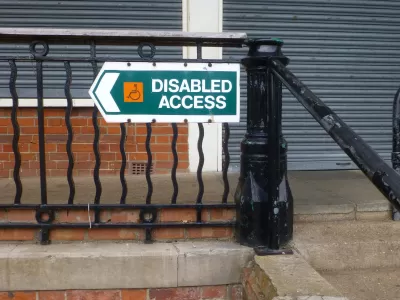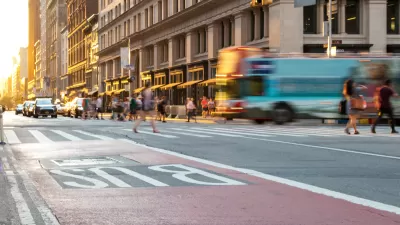A transit rider offers a powerful perspective on what it's like to use a wheelchair in New York City.

In the New York Times, New York resident Nolan Ryan Trowe details the difficulty of navigating a famously walkable and transit-rich city using a wheelchair.
On top of near-constant discrimination from strangers, Trowe writes, "I learned quickly that the lack of accessibility in the city's subway system adds to the frustration and humiliation.
Subway station elevators to the train platforms are frequently broken and there are often no accessible stations where I need to go. I am not supposed to walk, but at times I am forced to ask someone to carry my chair down or up the steps, while I make my way tentatively on foot, putting me at risk of further injury and infection … On many days, I wait for two or three trains before finding one that has space for me in the car."
Disability justice activists sued the MTA in May 2017 for practices in station design and maintenance that effectively shut disabled residents out of public transportation. In May 2018, the MTA approved $600 million to improve wheelchair access. Still, Trowe notes, "The city estimates that there are nearly 100,000 wheelchair users in New York City. Fewer than one-quarter of city subway stations are accessible."
FULL STORY: Revelations in a Wheelchair

Planetizen Federal Action Tracker
A weekly monitor of how Trump’s orders and actions are impacting planners and planning in America.

Map: Where Senate Republicans Want to Sell Your Public Lands
For public land advocates, the Senate Republicans’ proposal to sell millions of acres of public land in the West is “the biggest fight of their careers.”

Restaurant Patios Were a Pandemic Win — Why Were They so Hard to Keep?
Social distancing requirements and changes in travel patterns prompted cities to pilot new uses for street and sidewalk space. Then it got complicated.

California Homeless Arrests, Citations Spike After Ruling
An investigation reveals that anti-homeless actions increased up to 500% after Grants Pass v. Johnson — even in cities claiming no policy change.

Albuquerque Route 66 Motels Become Affordable Housing
A $4 million city fund is incentivizing developers to breathe new life into derelict midcentury motels.

DC Area County Eliminates Bus Fares
Montgomery County joins a growing trend of making transit free.
Urban Design for Planners 1: Software Tools
This six-course series explores essential urban design concepts using open source software and equips planners with the tools they need to participate fully in the urban design process.
Planning for Universal Design
Learn the tools for implementing Universal Design in planning regulations.
Heyer Gruel & Associates PA
JM Goldson LLC
Custer County Colorado
City of Camden Redevelopment Agency
City of Astoria
Transportation Research & Education Center (TREC) at Portland State University
Camden Redevelopment Agency
City of Claremont
Municipality of Princeton (NJ)





























